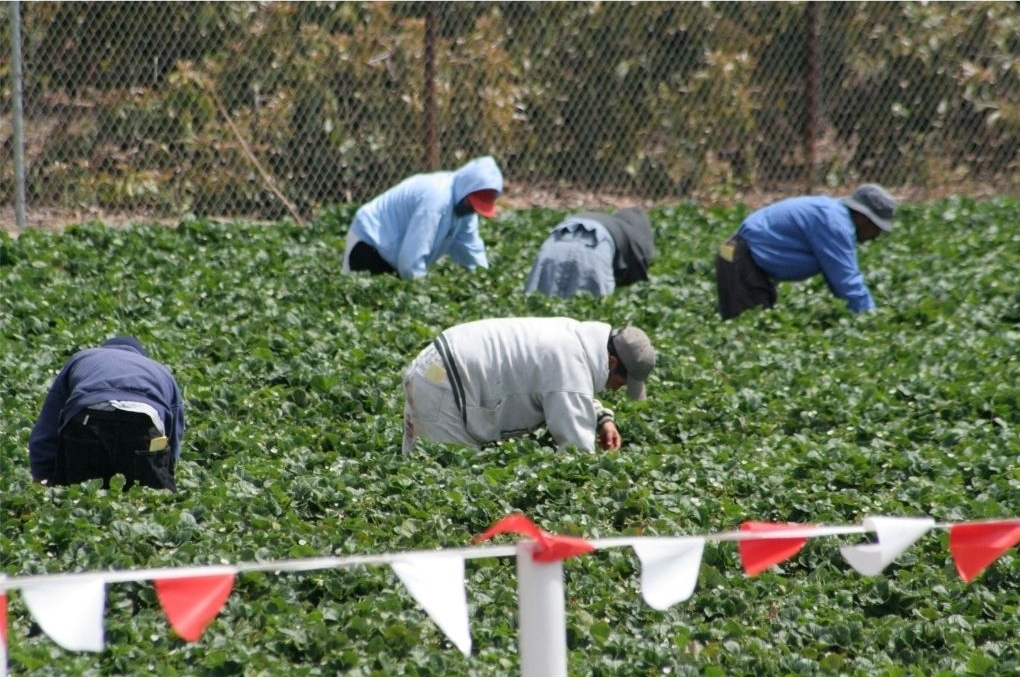The COVID-19 pandemic has exacerbated and exposed the “vulnerability, inequality, and precarity” that newcomers, immigrants and migrant workers face in rural Canada, a new study has found.
Following an extensive analysis of available literature from various sources pertaining to rural immigration, the 2021 journal review, published by Manitoba’s Brandon University, concludes that the pandemic has not necessarily created new challenges but deepened long standing issues faced by immigrants in rural towns.
“The financial, personal, and health struggles rural newcomers and migrant workers have faced during the pandemic stem not exclusively from the direct impacts of COVID-19, but also from a lack of recognition that these groups exist and are an essential part of rural communities and small towns,” the authors state.
Migrant workers’ impact on labour
According to the study, the number of foreign workers in Canada’s Temporary Foreign Workers Program (TFWP) increased from 72,965 to 98,060 between 2015 and 2019. Agricultural workers were the bulk of workers in the program between 2015 and 2018, with one in 10 crop production employers hiring at least 30 per cent of their employees through the program.
Before the pandemic, foreign workers through the TFWP made up 15.5 per cent of the labour force in the North American Industry Classification System category of agriculture, forestry, fishing and hunting.
However, in March 2020, the same month that the World Health Organization declared COVID-19 a global pandemic, the TFWP saw a 47 per cent decline in workers compared to that same month the previous year. This resulted in an increase in labour vacancies and a disruption in food production, with agriculture employers estimating that approximately 20 per cent of positions were left vacant.
The economic impact that this labour shortage had on the agriculture industry was estimated at $2.9 billion in lost sales.
This disruption, the paper states, illustrates the overreliance of Canada’s food production systems on “the unstated assumption of a substantial workforce leaving and entering the country on a seasonal basis.”
Despite this, at an annual level, the TFWP only saw a 10 per cent decrease in workers compared to 2019’s total numbers, while the number of permanent residents in Canada registered a 45.7 per cent decline and the number of study permit holders decreased by 33 per cent.
‘Economically essential to Canada’
In July 2020, the federal government pledged $58.6 million to the TFWP, which went towards supporting and enhancing the health and safety of temporary foreign workers in Canada.
The funding was designed to improve health and safety measures on farms, with an emphasis on refining employee living spaces and expanding personal protective equipment resources.
However, as the study finds, while government interventions into temporary foreign workers and their living spaces demonstrate a “marked change in perception towards these very workers” who are deemed essential to “sustain the food supply,” it’s the workers who continue being negatively affected.
“The entry of seasonal agricultural workers was facilitated as an exception because their admission was economically essential to Canada,” the authors explain.
But by circumventing pandemic-related travel restrictions to bring in temporary foreign workers at a higher rate than other immigrants, the government only “exacerbated the already disproportionate economic, social, and health risks (temporary foreign workers) face on account of their deportability”
The pandemic also heightened migrant workers’ vulnerability, which includes precarious employment and risk of exploitation from employers.
Food processing facilities and farms employing migrant workers were common sites of COVID-19 outbreaks which the authors attribute to “long standing issues…including overcrowded worker housing, poor access to medical care, and unsafe and unhealthy working conditions.”
The authors also found that as a measure to mitigate the spread of the virus, some employers restricted migrant workers from leaving the farm property, which made the workers feel even more isolated than usual.
“The pandemic has therefore had negative health and social impacts on precarious migrant workers in rural areas,” the study concludes.
Isolation and economic hardship in rural Canada
The study also showed that even before the pandemic, rural immigrants and foreign workers were facing challenges that differ from their urban counterparts: reduced access to public services, increased distance from cultural and religious communities, and “precarious, dangerous, or otherwise undesirable” employment, especially in the agri-food sector.
There’s also often a lack of high speed internet in these areas, which made contact with family members even more challenging.
“Such networks are often crucial to their well-being and to facilitate their integration into their wider communities,” the study states.
Newcomers in rural areas also lack settlement and language support services, and often experience language barriers, poor housing conditions, underemployment, isolation, racism and discrimination.
The authors also note that recent immigrants were more likely to transition from employment to unemployment than both Canadian-born and long-term immigrants in March and April 2020. Female recent immigrants experienced the greatest rate of this transition.
Full, permanent status
The study highlights a recommendation from the Migrant Rights Network sent to relevant federal ministers and the director general of the Temporary Foreign Worker Program in March 2021, demanding “full and permanent immigration status for all migrant and undocumented people in Canada.”
Worker safety and satisfaction should be “at the heart” of future discussions surrounding the viability of rural-based agriculture and agri-food industries in Canada, the study states.
Recruitment and retention will also be a focus, as “the pandemic has amplified the need for national standards in health and safety, housing, and employment for migrant agricultural workers, as well as inspection of worker treatment.”
The authors also contend that a need exists for specifically rural perspectives on immigration during policy-making and public discussion, which includes “place-based approaches to ensure rural-appropriate supports for newcomers, immigrants, and migrant workers.”
The authors argue that Canadian policymakers should set their sights on a “post-COVID19 reality in which migrant workers and newcomers experience long-term residency security and employment satisfaction in Canada’s rural areas.”
Aaron Hemens is a freelance photographer and journalist currently based in Kelowna, B.C. Originally from Ottawa, Ont., he graduated from Carleton University’s journalism program in 2018. His career as a journalist has taken him as far north as Inuvik, N.W.T., and to rural farming towns such as Creston, B.C. His professional interests include community news, arts and culture, race and diversity, and solutions-based storytelling.





